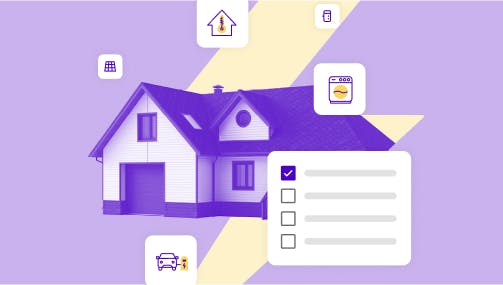FEDERAL ENERGY EFFICIENT HOME IMPROVEMENT CREDIT (25C)
Federal electrical panel tax credits
The 25C Energy Efficient Home Improvement Tax Credit makes it more affordable for Americans to install an electrical panel and complete other upgrades to improve home energy efficiency.
View other eligible projects under this tax credit:
Jump to section
Introduction
Introduction
Disclaimer: The information presented here is for educational purposes only. It is not intended to provide specific tax guidance. For questions regarding your individual tax situation, we suggest consulting with your tax advisor.
Tax Credit
Up to $600
Available now
Please note: If you're claiming 25D for a rooftop solar or battery storage installation and that installation required you to upgrade your electrical panel, you may be able to apply 25D to those costs as well. But that’s unrelated to the 25C tax credit.
Who qualifies for the electrical panel tax credit?
The 25C tax credit can be used by renters, and homeowners making upgrades to their primary or secondary home.
Homeowners and renters making upgrades to their existing home
Renters and homeowners can use this tax credit for electrical panels in homes that are already built. Homeowners can use this tax credit for primary and secondary homes.
Landlords can never claim this credit for homes they rent out but do not use as a residence themselves.
For more information, see Frequently asked questions about energy efficient home improvements and residential clean energy property credits.
To learn about credits for new homes, see Section 45L New Energy Efficient Home Credit, which offers incentives for Zero Energy Ready homes.
No income requirements
There are no income limitations for the 25C Tax Credit — but like nearly all federal tax credits, you can only use it if you pay federal income taxes.
Which electrical panels qualify?
Electrical panels must meet a few requirements to qualify.
Qualifying electrical panels must meet the standards of the National Electric Code (NEC) and have a capacity of 200 Amps or more. This means that your new/upgraded panel must be able to serve a load of at least 200 Amps, but you don't need 200 Amps of incoming utility service. Smart panels may qualify if they allow you to serve a load of 200 Amps.
For more on the efficiency requirements of other purchases, see this IRS FAQ.
How to use the electrical panel tax credit
Fill out IRS Form 5695 and submit it with your federal tax return.
Keep track of (or track down) the invoice from your contractor.
Fill out IRS Form 5695, Residential Energy Credits. For instructions on how to fill out the form, including more in-depth information about individual amounts you can claim, see the IRS’s Instructions for Form 5695.
Submit the form along with your annual tax return.
You may enjoy a lower tax bill or bigger refund!
You can claim the standard deduction and claim the 25C tax credit. You don't have to itemize.
You can only apply for and claim the 25C tax credit for energy upgrades in the year in which a project is completed. For example: if you purchased your equipment in late 2023 but didn’t have it installed until 2024, you have to file the tax credit with your 2024 tax return.
Discover other incentives with the incentives calculator!
There are other incentives that you may qualify for. Our incentive calculator will show you a personalized list of incentives.
Go to Incentive CalculatorHelpful tools

Personal Electrification Planner
Interested in upgrading your home to all-electric appliances and vehicles? Generate a personalized electrification plan based on your particular home, lifestyle, and priorities — all in just a few minutes.

Incentive Calculator
Find out how much you could save with tax credits and rebates for heat pumps, water heaters, electric vehicles, electric stoves, rooftop solar, wiring upgrades, and energy efficiency improvements to your home.

Electric panel
Pre-wiring your home may save you time and money if you’re making other electric upgrades. Learn the pros and cons of upgrading your electric panel—and how to get started.
Want to learn more about electrifying everything?
Join millions of households who are going electric. sign up for free electrification tips, explainers, advice, and more.

